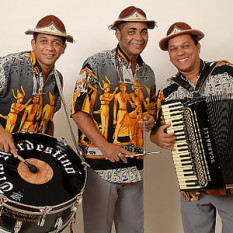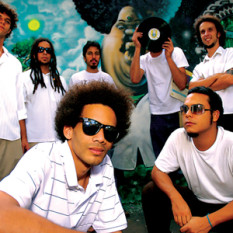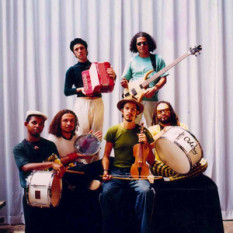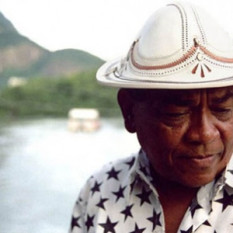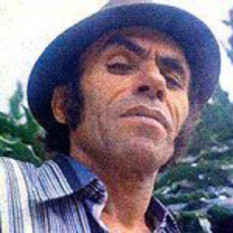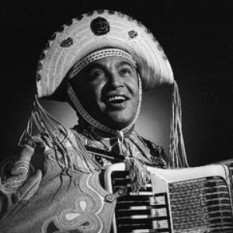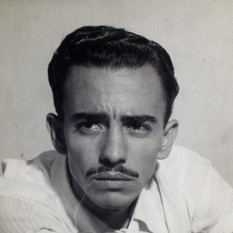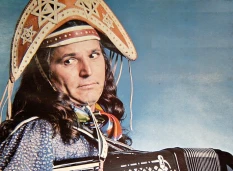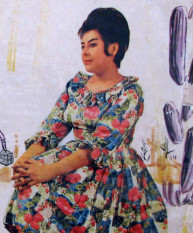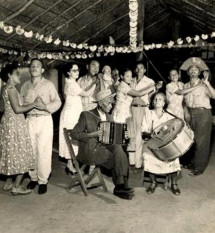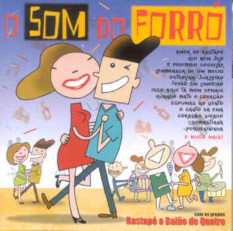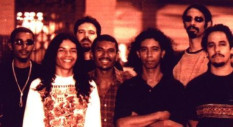The baião is a Northeast Brazilian rhythmic formula that became the basis of a wide range of music. Forró, côco, and embolada are clear examples. The main baião instrument is the zabumba, a flat, double-headed bass drum played with a mallet in one hand and stick in the other, each striking the opposite head of the drum.
The baião originated with the native peoples in the Northeast but now incorporates elements of indigenous, mestizo, African, and European music. Generally, the indigenous elements are flutes and wooden shakers; African-influenced baiãos are accompanied with atabaque drums and include overlapping call and response singing; and European influences include dance music such as the polka, mazurka, schottische, and quadrille, as well as Portuguese contest singing and accompaniment with one or two pandeiros playing the baião rhythm.
The baião is most associated with the State of Pernambuco, just north of Bahia. Despite the relatively small area that confines its popularity, a great variety of music is associated with baião. One only need listen to Gilberto Gil from Bahia, Luiz Gonzaga and Selma do Côco of Pernambuco, and any "repentista" singer from the region such as Perdal Lins and Verde Lins. Although samba and bossa nova are largely considered Brazil's national genres of music, no complete understanding of Brazil's music and culture can be had without taking into account the baião and its influences as far south as São Paulo and Rio de Janeiro.
The baião is very much rural music and for a long time was eschewed by the urban upper classes. .

